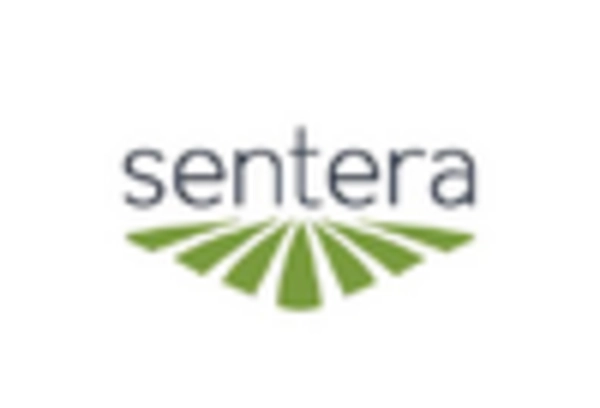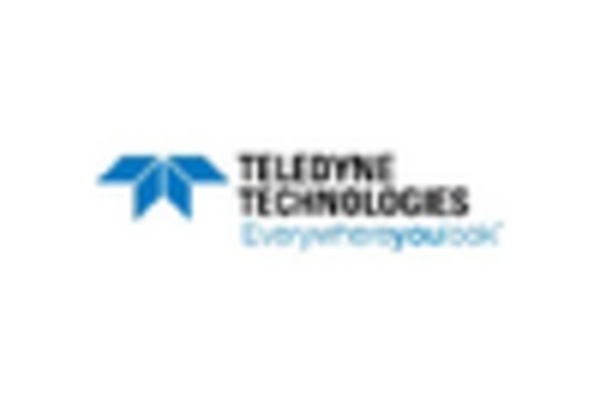Rising Demand in Environmental Monitoring
The Multispectral Camera Market is experiencing a notable increase in demand for environmental monitoring applications. As concerns regarding climate change and environmental degradation intensify, organizations are seeking advanced imaging solutions to assess land use, vegetation health, and water quality. Multispectral cameras provide critical data that aids in the analysis of ecosystems and biodiversity. According to recent estimates, the market for environmental monitoring using multispectral imaging is projected to grow at a compound annual growth rate of approximately 12% over the next five years. This growth is driven by the need for precise data collection and analysis, which multispectral cameras facilitate effectively, thereby enhancing decision-making processes in environmental management.
Emerging Trends in Industrial Applications
The Multispectral Camera Market is witnessing emerging trends in industrial applications, particularly in quality control and material inspection. Industries such as manufacturing and pharmaceuticals are increasingly adopting multispectral imaging to ensure product quality and compliance with regulatory standards. These cameras facilitate the detection of defects and inconsistencies in materials, thereby enhancing operational efficiency. The industrial segment is projected to grow steadily, with estimates indicating a potential market size of USD 800 million by 2027. This growth is indicative of a broader trend where multispectral cameras are being recognized not only for their agricultural and environmental applications but also for their critical role in industrial processes.
Advancements in Remote Sensing Technologies
Technological advancements in remote sensing are significantly influencing the Multispectral Camera Market. Innovations in sensor technology, data processing algorithms, and imaging techniques are enhancing the capabilities of multispectral cameras. These advancements allow for higher resolution images and improved spectral sensitivity, which are crucial for applications in agriculture, forestry, and urban planning. The integration of multispectral cameras with drones and satellites is also expanding their utility, enabling comprehensive data collection over large areas. As a result, the market is expected to witness a surge in adoption, with projections indicating a growth rate of around 10% annually as organizations increasingly leverage these technologies for better insights and operational efficiency.
Growing Applications in Precision Agriculture
The Multispectral Camera Market is significantly driven by the growing applications in precision agriculture. Farmers and agricultural professionals are increasingly utilizing multispectral imaging to monitor crop health, optimize irrigation, and enhance yield predictions. By capturing data across various wavelengths, these cameras enable the identification of plant stress and nutrient deficiencies, allowing for timely interventions. The precision agriculture segment is anticipated to account for a substantial share of the market, with estimates suggesting it could reach USD 1.5 billion by 2026. This trend reflects a broader shift towards data-driven farming practices, where multispectral cameras play a pivotal role in improving agricultural productivity and sustainability.
Increased Investment in Research and Development
Investment in research and development within the Multispectral Camera Market is on the rise, as companies strive to innovate and enhance their product offerings. This influx of capital is directed towards developing new imaging technologies, improving sensor performance, and expanding the range of applications for multispectral cameras. As organizations recognize the potential of multispectral imaging in various sectors, including healthcare, environmental science, and defense, the market is likely to benefit from a wave of new products and solutions. Analysts predict that R&D investments could lead to a market expansion of approximately 15% over the next few years, as enhanced capabilities attract a broader customer base.


















Leave a Comment